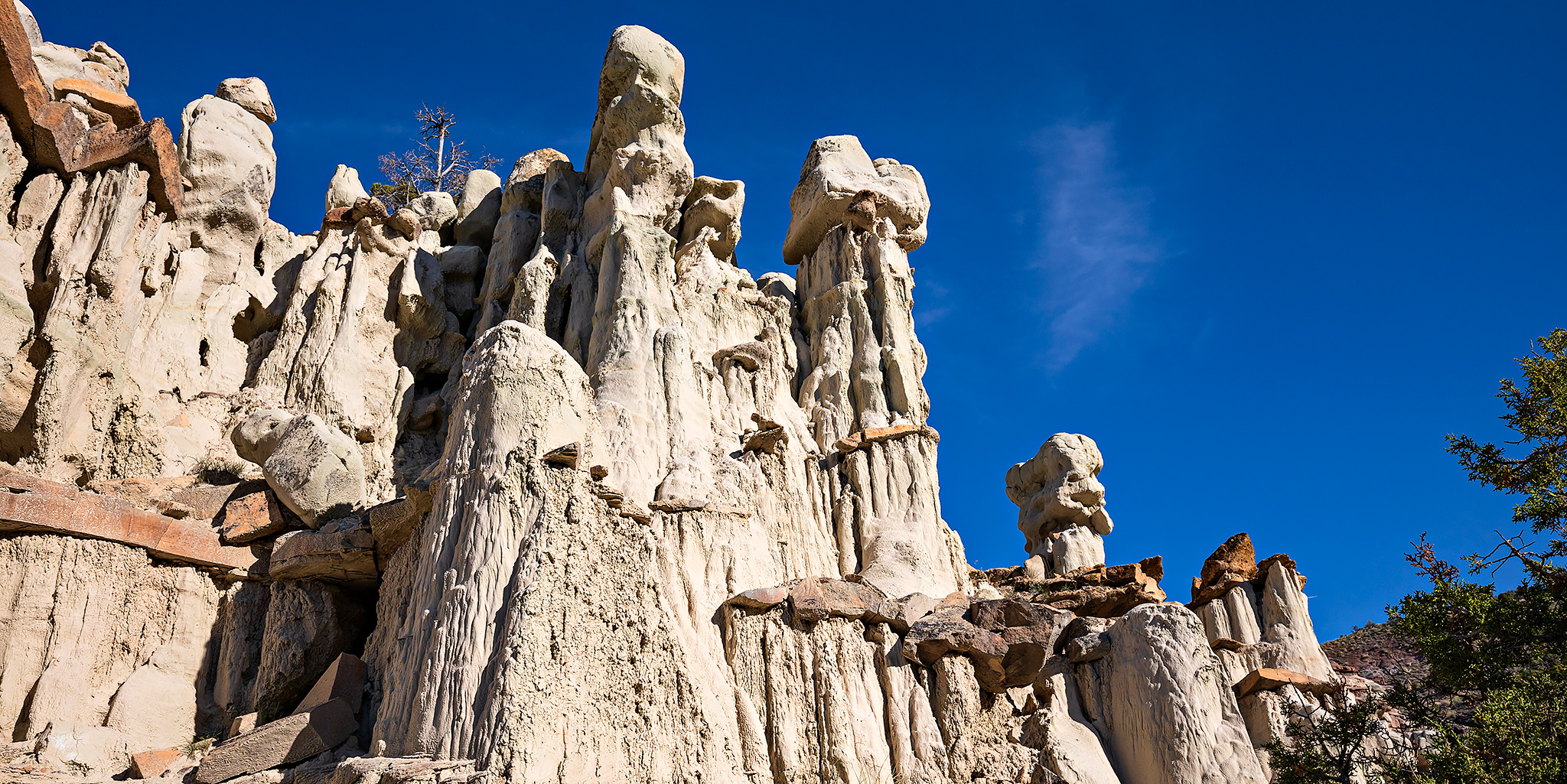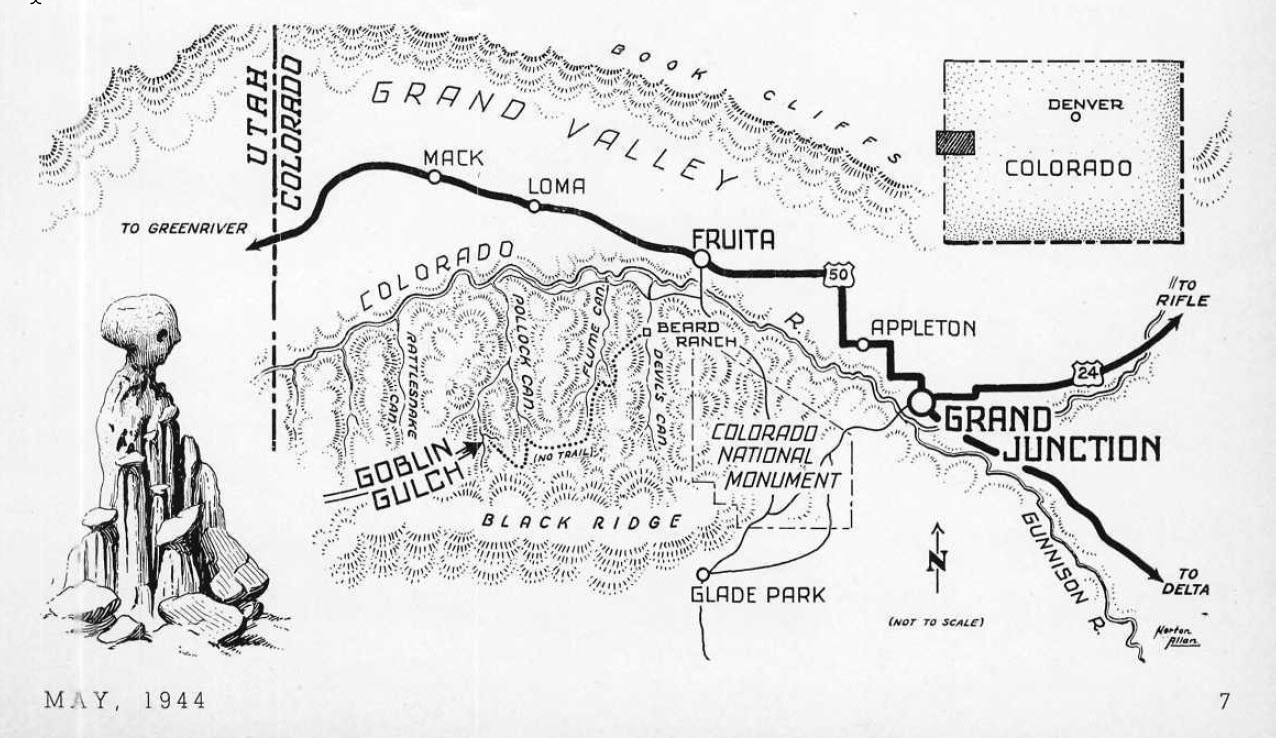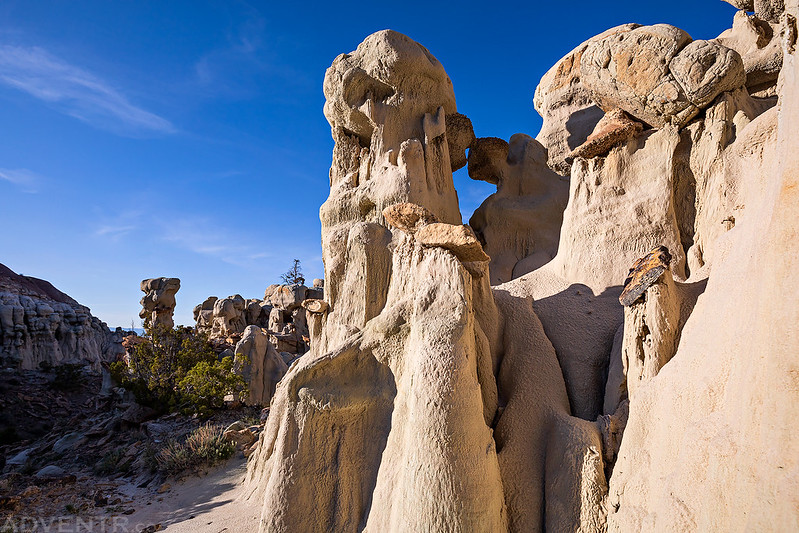Canyons of the Black Ridge: Trailing the Ghosts and Gnomes of Goblin Gulch
Cinco de Mayo | Tuesday, May 5, 2020
When Will Minor started to hunt for a small band of strayed Angora goats he little dreamed he soon would have cause to forget them. As he entered a tiny canyon he suddenly came face to face with the weirdest collection of natural forms he ever had seen. The soft white sandstone of the canyon walls was covered with faces and figures—some animal, some human, some resembling modernistic sculpture and others like nightmarish creatures which only a writer of horror fiction could conceive.
– Desert Magazine, May 1944
Last week while I was going down the rabbit hole of searching online for more information about Will Minor and the High Trail, I came across an old magazine article that was written by him called Trailing the Ghosts and Gnomes of Goblin Gulch. This article was featured in the May, 1944 issue of Desert Magazine and was about a place he found many stone faces weathered from soft white sandstone just below Black Ridge that he called Goblin Gulch. I had never heard or seen anything about this location before, but the article and photos really piqued my interest and I knew I would have to try to find this forgotten place hidden within the Black Ridge Canyons Wilderness!
The article contains a written description of their route taken from Fruita to Goblin Gulch, which was obviously written before the roads across Black Ridge existed, and also a hand-drawn map that’s not to scale, but was helpful in pinpointing the location in Google Earth.
I left right after work this afternoon and drove over Black Ridge to my starting point along the Rattlesnake Arches Road on the other side. I hiked along a closed road and then weaved my way through sagebrush flats and Pinyon-Juniper forest while dodging plentiful prickly pear cactus and cryptobiotic soil crust as I entered the Black Ridge Canyons Wilderness. Obviously, I hoped to find a special and unique landscape today, but I knew that the article in Desert Magazine was published over 75 years ago and there was a good chance that the soft sandstone could have weathered away in that time period, so I kept my expectations low.
When I reached the rim of the drainage that I thought was the most likely location of Goblin Gulch, I looked over the rim and saw exactly what I had hoped to find- Goblin Gulch!
Goblin Gulch is a small but interesting area comprised of a soft white sandstone that reminded me of The Goblins found in the Little Book Cliffs and Fantasy Canyon located near Vernal, Utah.
I spent the remainder of the evening exploring Goblin Gulch and taking photos until all the unusual formations were in the shadows, which was about an hour before sunset.
Goblin Gulch Hoodoo
Overlooking Goblin Gulch from the rim.
The Goblin King
Goblin Wall
Ghouls in the Shade
The Ghost Wall
Looking down the wash below Goblin Gulch.
Goblin Gulch Ghouls & Hoodoo
The View From Above
Hole-In-The-Wall
Fragile Figures
Goblin’s Nook
About an hour before sunset I started hiking back to my Jeep. Here’s a view overlooking the Grand Valley as I walked back along the closed road.
I liked the layers and light behind my Jeep as I returned to the trailhead shortly before sunset.
The drive back out over Black Ridge was a little interesting as I had to dodge a bunch of cows that were hanging out on the road and not eager to move. But once beyond the cows I sped off down the dusty road while watching the sunset in my rear-view mirror.




















Pretty eerie, I’d say! Interesting!
I love your photos and stories. This is my favorite so far.
Thanks Joyce!
Hi, Randy. Wondered if you had more details on accessing Goblin Gulch–a track or something. We’re in Fruita and have hiked Rattlesnake, Mee, and Pollock canyons, but this is the first I’ve heard of Goblin–even our local ranger friend hasn’t heard of it.
Everything you need to find Goblin Gulch is in the hand-drawn map and article I posted above. The fun is in the hunt! I would hate to ruin that experience for others by making it too easy.
Found it! By correlating the 1944 map, Google Earth, and your photos.
Awesome! It’s a cool little spot!